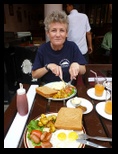

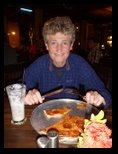
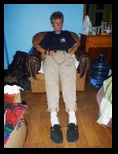
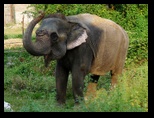
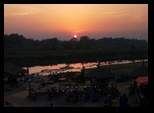

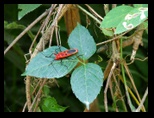
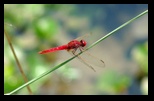
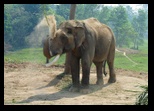
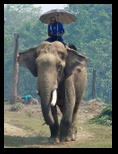
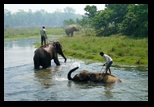
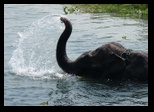
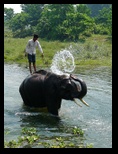
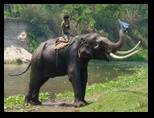

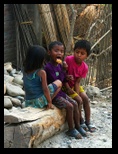
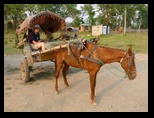
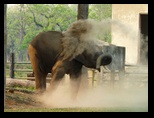
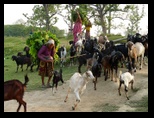
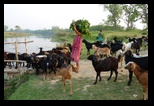


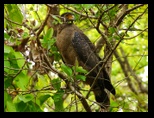

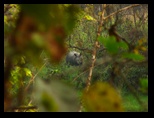
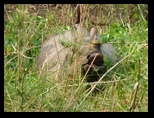


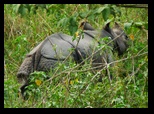
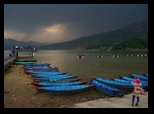
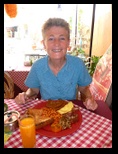
 Steintore
Steintore
Click on a photo to enlarge it.
We spent longer in Kathmandu than we had planned because we needed to get checked out and to get rid of our infernal coughs that were keeping us up at night. We found a clinic that deals with tourists that was very good and went through various tests. We both ended up with antibiotics for our coughs and for my chest infection.
It took a few days for the medication to start working so we still had a few disturbed nights from the coughing fits but we had to get better before we could go off trekking again. We also had plenty to do. We managed to get some updates done for the website and spent time working out a plan for Tibet. We wanted to work out the overland route and possible costs before going to an agent. We had already had some quotes but they all seemed too expensive.
The strategy worked because an agent took us to the head office where all the agents book their tours. It meant we could book directly and save ourselves an agent's fee - roughly $400 US for the two of us. So it had been well worth the time and effort working out how much a tour should cost.
It's still expensive to get to Tibet but the only way to get there is through an agent who will get us the correct permits and will also be able to book us onto the train from Lhasa to Xian - we need an address in China to get the tickets sent out if we book online so that's not possible without an agent.
We also managed to get Kirsten's boots mended (the soles were coming off) for only $1, bought some new wind-proof jackets for $20 each, looked at the maps and made a plan for trekking in the Annapurna range and I got my hair cut for my birthday!
Then we went off to Chitwan National Park for a few days. It is the first National Park in Nepal and is a World Heritage Site. It's area covers 932 km2 (360 sq. miles) and is situated in the subtropical lowlands.
The park is a haunt for more than 700 species of wildlife and home to at least 43 species of mammals. There are Bengal tigers which are not easy to spot and leopards who tend to stick to the outskirts of the park. It is considered to have the highest population of sloth bears and has an increasing number of rhinoceros despite the poaching. There are wild boars, Sambar deer, Hogg deer, antelopes, and various monkeys. In 2006 543 species of birds were identified in a survey.
The bus ride took 7 hours from Kathmandu and we had to wait 45 minutes to get picked up by our hotel. After lunch we walked around town checking prices for tours in the National Park. It was looking very expensive.
The cheapest deal we found cost $54 per person for a package:- a 1 hour canoe ride, 3 hour walk with guide and a 4 hour Jeep ride all in one day plus a 90 minute elephant ride the following morning. The cost of each separately always had to have the $15 National Park fee included so the cheapest option was just to do the elephant ride for $28 per person. All of it was too much for our budget so we did it the cheap way.
We walked to the elephant stables not far from our hotel where the animals each have their own space under a roof that gives them shade. They seemed to be well looked after and we watched one giving himself a dust bath!
Instead of going on a canoe ride in the blazing heat, we walked along the river with a German couple who were also staying at our hotel and watched as two elephants were given a bath. Later that afternoon, the four of us got a horse and cart ride out to the Elephant Breeding Centre.
We walked across a rickety bridge across the river that didn't exactly look safe - there are crocodiles in this area but there weren't any waiting for tourists to fall through at the time!
The centre started in 1986 with gifts of elephants from India, Myanmar and Thailand. Since then there have been 34 "live" births including a pair of twins in 2008. (Elephants have a 22 to 24 month gestation period and can live up to 70 to 80 years.
Between the ages of 2 and 4 years, the elephants are trained to be ridden which takes a lot of work. We walked around the area where all the elephants are kept and saw two very sweet babies. They were being fed with bundles of bamboo leaves that had corn wrapped inside.
We got there at a good time because, just as we were leaving, coach loads of other tourists started arriving. So we walked back over the rickety bridge, waiting as a herd of goats tried to push past us to get across the river, and then got our horse and cart back to the town.
Elephants in Chitwan National Park
We bought some bananas from a local stand and fed them to Eechakali - the hotel's own elephant and the following day we went on a 3 hour jeep ride out to 20,000 Lakes. It is not part of the National Park but is on the outskirts of it.
We saw 2 rhinoceros, lots of eagles and kingfishers, crocodiles, Macao monkeys, wild boar, Hogg deer and spotted deer. We didn't see any tigers but then we hadn't expected to. We'd gone to see the rhinos.
Rhinoceros in Chitwan National Park
We shared the jeep ride with the German couple so it only cost us $7-50 each and we really enjoyed it. It was great to get out into a National Park to see some wildlife and made a change from the trekking. However, the 40°C temperature was a huge change after the minus temperatures of Everest and we were looking forward to cooler climes.
We got a local bus for the 5 hour journey to Pokhara which wasn't exactly comfortable because of the heat and the the very full bus. They cram people in but the buses are so old and beaten up it's a wonder they get anywhere at all!
At one point on the journey a passenger shrieked for the bus to stop - an emergency! Someone thought a sleeping man was unconscious but he was just sleeping! How anyone can fall asleep on these buses is beyond me especially when someone sitting behind us was sick! Just like Myanmar, there seem to be a lot of people in Nepal who get travel sick but still get on the buses!
We found a hotel in Pokhara and had a shower to get rid of all the dust and grime and we did some washing. Later, as we were walking around the town, we got caught in a hefty rain and hail storm. We ducked into a small café because it was bucketing down. Kirsten took a video of the unbelievable storm that seemed to come from nowhere!
Storm in Phokara
We like Pokhara. It is far less polluted than Kathmandu and has a very "laid-back" feel to it. We stayed for 6 nights, first in a hotel on the lake but there wasn't a proper secure area where we could leave a bag with things we didn't need for trekking and our computer and electronic stuff. We were also disturbed every night by termites or something scratching under the beds which didn't exactly make us feel like staying!
So we hunted for a different one and found Palm Garden Lodge - a super place up on the hill with a great view of the lake, run by Ralf from Germany and his Nepali wife Monjo. They had built it themselves 4 years ago and it was super clean. Plus they guaranteed that our luggage would be safe when we left it there.
It was our home away from home whilst we did all the planning for the Annapurna trekking and organised TIMS cards and permits. We also sat on the balcony to watch the sunsets. Wonderful!